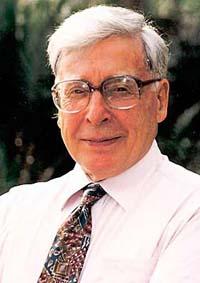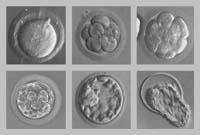Nobel Prize in Medicine for the father of fertilization technique in vitro

Robert G. Edwards, Nobel Prize in Physiology or Medicine this year. (Photo: Sheikh Hamdan Bin Rashid Al Maktoum Award for Medical Sciences/Wegune Official Nobel Laureates)
Robert G was the 1950s. Edwards began to investigate the biological bases of fertilization. To overcome the sterility of couples, he suspected that the oculum was an extracorporeal fertilization and tried hard to achieve it.
He studied the transformation of oocytes into eggs and discovered the necessary factors and hormones in this process, as well as the phase in which fertilization occurred. He was also able to activate the sperm and in 1969 he managed to fertilize an egg in vitro.
However, the fertilized egg did not continue to grow, it did not become an embryo. Then, Edwards thought it would have better results if before fertilization the oculum reached the ovary. He asked for help from gynecologist Patrick Steptoe.
Fruitful collaboration
Steptoe was inventor of the technique called laparoscopy. Until then, to obtain oocytes, a small portion of the ovary was extracted to the woman, a method that was not suitable for the optimal moment of fertilization of the eggs. Laparoscopy allowed egg administration at this stage without causing any damage to surrounding cells.
In the early 1970s, fertilized embryos Edwards and Steptoe in vitro began to be implanted in female breeding centers. There were a hundred attempts, but in all cases women lost the embryo. Thinking that the key could be in the hormonal treatment that was given to women to get the oocytes, they changed the treatment and thus got their first pregnancy. It was ectopic and they had to provoke abortion.

Early stages of the development of a human embryo fertilized in vitro. (Photo: Wikipedia)
After these failures they decided to put aside the treatment that prompted the development of the eggs. As a result, they could only take one oculus of the month, but, from the concentration of luteinazating hormones in the urine, they could know the most appropriate time to obtain the oculus with laparoscopy.
Therefore, they tried that way. Part of society was against it for ethical reasons, but in the end, in 1978, Louise Joy Brown was notified to the world. He was the first child born through in vitro fertilization.
Rapid development
Subsequently, Edwards and Stepto created a clinic specializing in assisted fertilization. Over the years, the technique was refined and improved, achieving by 1986 the birth of a thousand children. Steptoe died in 1988 and Edwards continued to work at this clinic until his retirement. By then, in vitro fertilization was used in clinics around the world to help sterile couples have children.
The Karolinska Institute stressed that Edwarnes' work has focused on embryonic stem cell research and the development of a pre-implantation genetic diagnosis. This diagnosis allows to know if the embryo fertilized in vitro is healthy before its implantation in the uterus.
Buletina
Bidali zure helbide elektronikoa eta jaso asteroko buletina zure sarrera-ontzian











